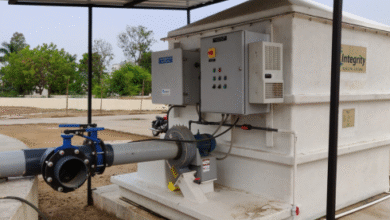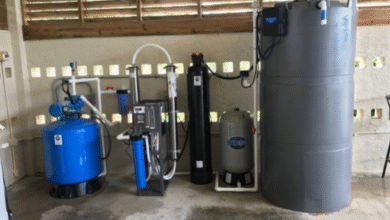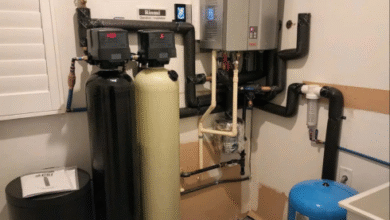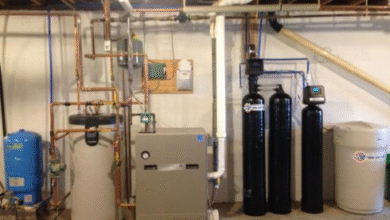How Natural Ventilation Boosts Commercial Building Efficiency

Benefits of Natural Ventilation in Commercial Buildings
Natural ventilation in commercial buildings offers a range of advantages that extend beyond mere environmental considerations. By harnessing the power of natural airflow, businesses can significantly reduce their reliance on mechanical cooling systems, leading to substantial cost savings in the long run. Furthermore, enhanced air circulation can help regulate indoor temperatures more effectively, creating a more comfortable environment for occupants without compromising on energy efficiency.In addition to cost savings and improved comfort, natural ventilation plays a crucial role in promoting better indoor air quality. By facilitating the exchange of fresh outdoor air with stale indoor air, these systems help reduce the buildup of pollutants and allergens, creating a healthier workspace for employees. This not only enhances overall well-being but also boosts productivity levels, making natural ventilation a smart investment for any commercial property looking to optimize its indoor environment.
Commercial Ventilation is essential for businesses looking to maximize cost savings and improve indoor air quality. By incorporating natural ventilation systems, commercial buildings can reduce reliance on mechanical cooling, regulate temperatures effectively, and create a healthier workspace for employees. Learn more at Commercial Ventilation.
The Role of Airflow in Enhancing Energy Efficiency
Effective airflow plays a crucial role in optimizing energy efficiency within commercial buildings. By strategically incorporating natural ventilation systems, businesses can reduce their reliance on mechanical cooling methods, resulting in significant cost savings and a decreased environmental impact. Proper airflow management allows for the efficient circulation of fresh air, minimizing the need for constant air conditioning usage and lowering overall energy consumption levels.In addition to cost benefits, enhanced airflow contributes to a healthier indoor environment for building occupants. Natural ventilation systems help to mitigate indoor air pollutants and maintain optimal humidity levels, promoting better air quality and overall well-being. By fostering a comfortable and airy atmosphere, businesses can improve employee productivity and satisfaction while also reducing the risk of airborne illnesses within the workplace.
Improving Indoor Air Quality with Natural Ventilation
Natural ventilation plays a crucial role in enhancing indoor air quality within commercial buildings. By allowing fresh air to circulate throughout the space, natural ventilation helps remove pollutants, odors, and moisture, creating a healthier and more pleasant environment for occupants. This can result in reduced instances of respiratory issues, allergies, and other health concerns associated with poor indoor air quality.Furthermore, natural ventilation systems enable the continuous flow of fresh outdoor air, reducing the buildup of stale air and contributing to a more invigorating atmosphere inside the building. By promoting air exchange and circulation, natural ventilation helps mitigate the concentration of harmful contaminants, such as volatile organic compounds (VOCs), mold spores, and bacteria, fostering a cleaner and safer indoor environment for occupants to thrive in.
Reducing Dependence on Mechanical Cooling Systems
Reducing Dependence on Mechanical Cooling Systems can lead to significant cost savings for commercial buildings. By harnessing natural ventilation, businesses can decrease their reliance on energy-intensive air conditioning units, resulting in lower utility bills and improved sustainability practices. This approach not only benefits the environment but also enhances the overall financial performance of the building by reducing operational expenses associated with cooling systems.Moreover, transitioning towards natural ventilation in commercial settings can contribute to a reduction in greenhouse gas emissions. By decreasing the usage of mechanical cooling systems powered by fossil fuels, businesses can play a vital role in combatting climate change and promoting eco-friendly practices. Embracing natural ventilation strategies not only reduces the carbon footprint of commercial buildings but also supports a more sustainable and environmentally conscious approach to facility management.
Enhancing Occupant Comfort through Natural Ventilation
In commercial buildings, enhancing occupant comfort through natural ventilation is a key consideration for creating a pleasant and productive indoor environment. By harnessing natural airflow, buildings can achieve optimal ventilation levels that help regulate temperature, reduce stale air, and create a more refreshing atmosphere for occupants. This natural approach not only enhances comfort but also contributes to a healthier indoor environment by promoting better air circulation and reducing the reliance on artificial cooling systems.Moreover, natural ventilation techniques can help to minimize stuffiness and odors within commercial spaces, improving overall air quality for occupants. By strategically designing ventilation systems that incorporate elements such as operable windows, atriums, or vents, buildings can enhance the flow of fresh air and create a more inviting atmosphere. Embracing natural ventilation methods not only benefits occupant comfort but also aligns with sustainable practices, reducing energy consumption and fostering a greener approach to building operations.
Natural Home Solutions, Natural Home Solutions offer a range of natural ventilation options for commercial buildings, enhancing occupant comfort and promoting a healthier indoor environment. By incorporating elements such as operable windows and vents, buildings can improve air circulation and reduce reliance on artificial cooling systems, leading to a more sustainable and inviting atmosphere.
Natural Ventilation Strategies for Different Types of Commercial Buildings
When it comes to implementing natural ventilation in different types of commercial buildings, a tailored approach is essential for maximizing effectiveness. For office spaces, incorporating operable windows and strategic placement of air intakes and exhausts can help regulate airflow and enhance occupant comfort. In retail establishments, utilizing rooftop monitors or clerestory windows can facilitate the intake of fresh air while promoting a well-ventilated environment conducive to customer satisfaction.In industrial settings, a combination of passive ventilation techniques such as louvers, wind towers, and solar chimneys can aid in controlling indoor temperatures and improving air quality. Warehouses and distribution centers can benefit from natural ventilation through the integration of high-volume, low-speed fans and automated windows that respond to temperature and humidity levels. By customizing natural ventilation strategies to suit the specific needs and functions of each commercial building, property owners can create sustainable and efficient indoor environments that prioritize both human comfort and energy savings.
Maximizing Energy Savings with Proper Ventilation Design
When it comes to maximizing energy savings in commercial buildings, proper ventilation design plays a crucial role. By strategically incorporating natural ventilation methods, buildings can reduce their reliance on mechanical cooling systems, leading to significant cost savings on energy bills. This approach not only decreases operational expenses but also contributes to a more sustainable and eco-friendly environment by lowering overall energy consumption.Furthermore, implementing a well-thought-out ventilation design not only enhances energy efficiency but also improves indoor air quality. By allowing for the circulation of fresh air throughout the building, natural ventilation helps remove pollutants and stale air, creating a healthier and more comfortable indoor environment for occupants. This, in turn, can lead to increased productivity and well-being among employees, making it a win-win situation for both the business and its workforce.
Case Studies Highlighting Successful Implementation of Natural Ventilation
Natural Home Solutions, a leading provider in skylight and ventilation installations, exemplifies the successful implementation of natural ventilation in commercial settings. One notable case study is a corporate office building in the heart of a bustling city. By strategically installing operable windows and skylights, the building achieved a seamless flow of fresh air, reducing the reliance on mechanical cooling systems. Occupants reported increased productivity and well-being due to improved air quality and natural lighting.Another case study by Natural Home Solutions showcases a retail store that incorporated natural ventilation techniques into its design. Through the installation of adjustable vents and clerestory windows, the store maintained a comfortable shopping environment for customers while reducing energy consumption. This integration of natural ventilation not only enhanced the overall shopping experience but also significantly lowered operational costs for the store owner.
Considerations for Retrofitting Buildings with Natural Ventilation Systems
When retrofitting buildings with natural ventilation systems, it is crucial to conduct a thorough assessment of the existing infrastructure to determine the feasibility and potential challenges. Factors such as building layout, orientation, climate conditions, and occupant requirements should all be taken into consideration during the planning stages to ensure optimal system performance. Additionally, collaborating with experienced professionals, like those at Natural Home Solutions, can provide valuable insights and expertise in designing and implementing effective ventilation solutions tailored to the specific needs of the building.Furthermore, cost-effectiveness and long-term sustainability should be key priorities when retrofitting buildings with natural ventilation systems. While initial investment costs may vary depending on the complexity of the project, selecting high-quality materials and energy-efficient components can help maximize the return on investment in terms of energy savings and improved indoor air quality. By carefully evaluating the potential benefits and drawbacks of different ventilation strategies, building owners can make informed decisions that align with their sustainability goals and contribute to creating healthier and more comfortable indoor environments for occupants.
Future Trends in Natural Ventilation for Commercial Buildings
As the demand for sustainable and energy-efficient building practices continues to rise, the future of natural ventilation in commercial buildings appears promising. Architects and designers are increasingly incorporating innovative ventilation strategies that harness renewable resources like wind and solar power to optimize airflow within structures. These advancements not only reduce reliance on mechanical cooling systems but also contribute to a healthier indoor environment by enhancing air circulation and quality.Furthermore, emerging technologies such as smart sensors and automated controls are revolutionizing the way natural ventilation systems operate. By dynamically adjusting ventilation rates based on real-time data on occupancy levels, external weather conditions, and indoor air quality, these systems can significantly improve energy efficiency while maintaining optimal comfort for occupants. The integration of these cutting-edge features into building designs is expected to set new standards for sustainable practices and performance in the commercial construction industry.




